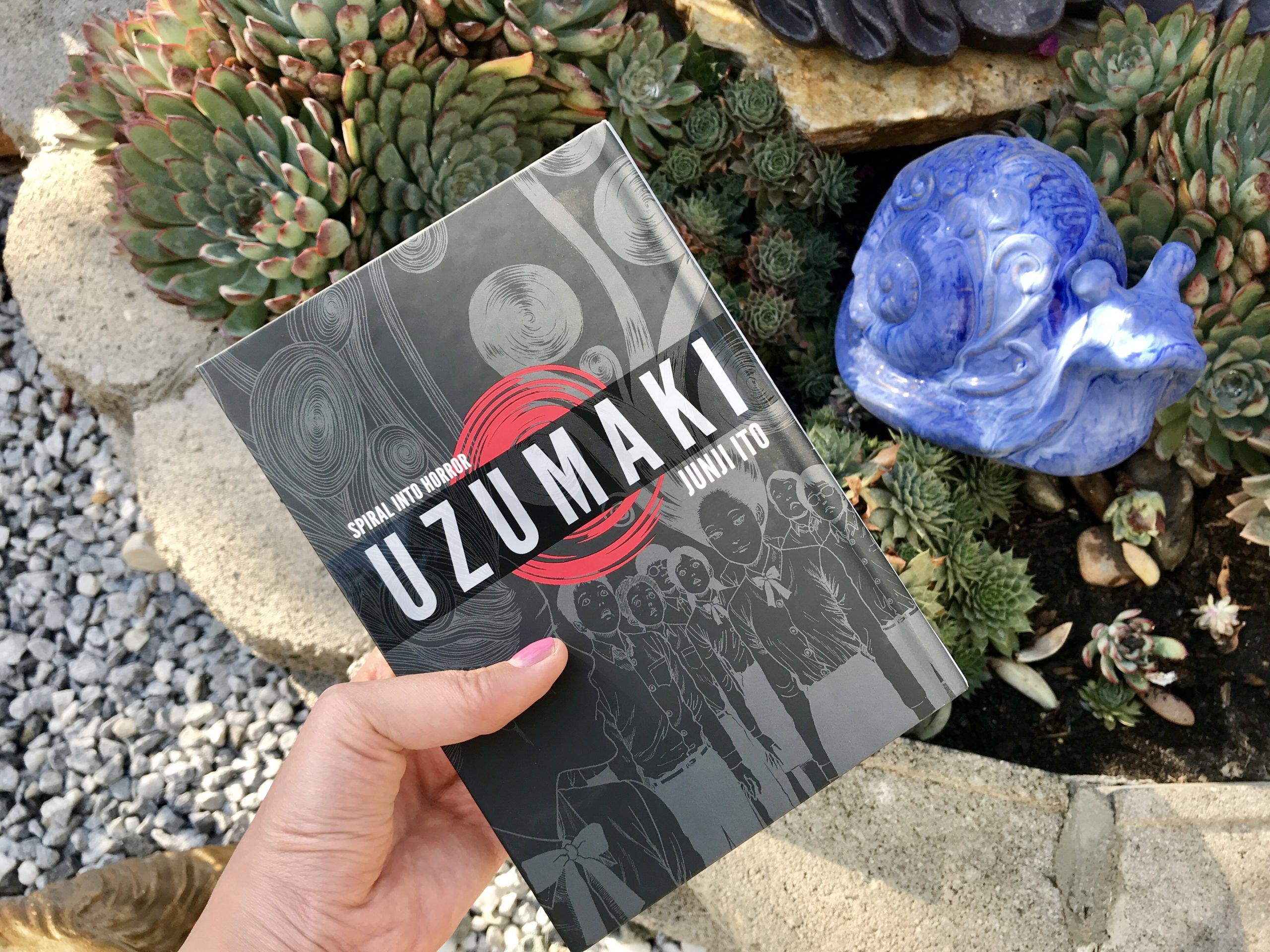I finally finished all 600+ whopping pages of Junji Ito’s Uzumaki, and I spiraled into love with it, y’all! It’s really more a collection of short stories about how the spiral (yes, the spiral as a *concept*) takes over the town of Kurozu. While Ito’s Smashed and Frankenstein immediately gave me the creeps page by page, Uzumaki’s horror operated in a more deep-seated kind of way — it seems rather unremarkable to say this, but Uzumaki embraces the terror of spiraling out of control.
Uzumaki begins with high school student Shuichi’s family (first, his father) becoming entranced by the spiral. Cue the tragedy, body horror, paranoia, and existential dread — soon, everything becomes a spiraling mess. Kirie, Shiochi’s girlfriend, emerges as the real protagonist of the story. Admittedly, I haven’t loved all of Ito’s female characters — many are temptresses or delicate damsels in distress (or abject horror, what have you). While her character starts off passive (not doing much except narrate, get rescued by Shuichi, etc.), she rises as a compassionate, even-keeled protagonist who guides us, and her friends, through Kurozu’s grotesque apocalypse in which we witness people becoming snails, people eating the people snails, tsunamis ripping through the region, and townsfolk feeding on umbilical mushrooms. Ito unrelentingly stays weird throughout the book, and his trippy, gross illustrations never fail to deliver shock.
Ultimately, Uzumaki made me think of how we follow spirals in society and our relationships to the point where we’re unable to discern repetition in different forms. It reminds me of how we go through cycles of trauma in both the collective and personal sense. In the book, the spiral becomes a source of vice: obsession, gluttony, prejudice, etc. People physically warp into spirals, too. Sinners (and occasionally, helpless innocents) become snails. Over time, the anguished lose distinguishing qualities and twist around each other like intertwined snakes as they cram into the row houses.
As the end of the book shows, we can get lost in that spiral for years and years. Uzumaki’s ending (which I don’t want to spoil) can seem rather bleak and desolate. But in my mind, Ito shows, with Kirie’s final decision, how we have each other even in the worst of times. After finishing Uzumaki, it’s no surprise to me that there’s so much critical acclaim for it. Its horrifying imagery alone makes it a masterpiece worthy of your eyeballs (and make sure they’re not popping out like Azami’s). Uzumaki envelops infinite meaning within the horrors of the spiral and endlessly replicates dread throughout its 600+ page saga, never losing its momentum.
